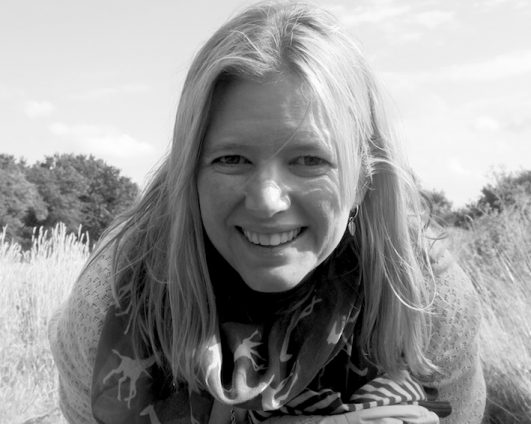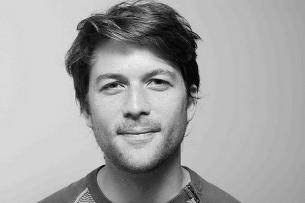Unpacking Impact
Anandana Kapur – Quicksilver: User behaviour and implications for makers of i-docs
Tiffany Fairey – These Photos Were My Life: Understanding Impact Over Time
Frédéric Dubois – Measuring impact: methodologies
Quicksilver – User behaviour and implications for makers of i-docs
The proliferation of interactive narratives as a means to grapple with rapidly changing contours of contemporary socio-political landscapes makes the revivification of its audiences a rite of passage. Rather than assuming that the categories of user-behaviour which interaction designers and architects work with are stable, alternate categories need to be proposed. For example ‘user attention spans’ are the quicksilver of the i-doc ecology but ‘time poverty’ suggests a critical shift in thinking of audiences who may not belong to sophisticated digital environments and whose ability to engage with materials is affected by larger socio- economic structures. Whereas their participation in interactive narratives is precisely the fulcrum of intended impact and inclusivity of i- docs that seek to question monolithic, fixed narratives of conflict, participation and representation.
The paper will discuss how to correlate user contexts with intended user journeys via examples of community based interactive projects from India. It will also discuss how a revivification of audience research methods for the world of the non-linear is contingent. Audience researches have historically traced consumption of media with active goal-oriented choices. However, effort making as opposed to lean-back viewing often alienates viewers. Here, the fact of attention becomes secondary to the quality of attention. A volte-face for big data industry perhaps but a welcome re-inscription of the anecdotal for those who work closely with small communities and for whom literacy of the genre and its affordances are crucial pre-requisites for exploring how audiences may perceive and interact with the materials produced by them.
Bibliography
Aston, J., Gaudenzi, S. & Rose, M. (2017). I-docs: The Evolving Practices
of Interactive Documentary. Wallflower Press: UK
Jessica, C. (2016). Exploring the return on investment for interactive
storytelling. Assessing Impact on Media. Retrieved from
http://mediaimpactfunders.org/exploring-the-return-on-investment-for-
interactive-storytelling/
Quinn, K. (2016). Contextual social capital: linking the contexts of social
media use to its outcomes. Information, Communication & Society. Vol
19. Issue 5: Communication and Information Technologies Section (ASA)
Special Issue. p 582-600
These Photos Were My Life: Understanding Impact Over Time
Talleres de Fotografia Social (TAFOS) was a pioneering participatory photography project that
ran for 12 years over the years of the internal conflict in Peru (1986-1998) and involved over
270 grassroots photographers from communities all over the country. TAFOS images constitute
a ‘visual memory gathered by the very people that lived it’ (Pastor 2007) that has become part of
Peruvian society’s ‘visual social makeup’ (Falconi quoted in Fairey 2015:198). The TAFOS
archive is housed at the Pontifica Universidad Católica del Peru and its images continue to
circulate.
My presentation considers the impact of TAFOS not in terms of its immediate outcomes or
measurable achievements but in relation to its long-term significance for a group of its
participants. A Korsakow film, These Photos Were My Life, captures the stories of former TAFOS
photographers reflecting on the project and its impact on their lives, 15-20 years after their
participation. It is argued that the social impact of participatory visual and media projects cannot
be understood through short-term evaluative models alone. When participatory visual initiatives
are considered as complex, emergent processes whose effects cannot be planned or
predetermined, it pushes us to consider impact from multiple perspectives, in context, over time
and from the subjective perspectives of participants. The goal is to build ‘thick’ rather than ‘thin’
descriptions of the social effects of participatory visual work, of its critical, enduring and
transformative potential and its tensions and limitations, and how these play out over time. This
presentation will raise points around:
• Evaluation regimes and their influence on approaches to the evaluation of participatory
arts and media initiatives
• Korsakow as a research and evaluation tool
• Evaluation design and strategy for participatory projects – mixed methods and adaptive
evaluation approaches
• Building impact case-studies for whom? Who gets to determine what counts as
significant?
Measuring impact: methodologies
Interactive storytelling is undergoing a revival. The network of networks seems to carry the
highest promise of interaction, communication and personalisation – an sandbox in which
creative storytelling can unfold. At a time when incumbent forms of journalism are
progressively making way for internet platforms and traditional film is making room for
streaming services, interactive web documentaries have been successfully operating in niche
worlds among the many new genres. Yet, that success comes at a cost and one of the main
problems currently encountered by makers of interactive documentaries is how to measure the
social and political impact of such productions, especially as most media impact
measurements are still oriented towards TV audiences, or contain a commercial bias. This
leads to relatively difficult production conditions and limited funding options.
As interactive storytelling is under-researched in general, with its social and political impact
is particularly under-documented, my paper will:
(1) define what an interactive web documentary is;
(2) discuss the case study Field Trip(1) with a focus on audience measurement (mainly
quantitative) on the one hand and social impact measurement (mainly qualitative) on the
other; and
(3) explain why a practice-based methodology (production and evaluation of an interactive
documentary), together with semi-structured interviews, as well as research from the
disciplines of product design, open science (e.g. altmetrics) and film studies are a useful,
sound and grounded combination for informing future practice of digital documentary
making.
1 Field Trip is an entirely open source documentary about the Tempelhof Field in Berlin. It makes use of Open
Hyper Video, live data and a participatory function. It is in prototype stage and is expected to go live in
November 2018.



